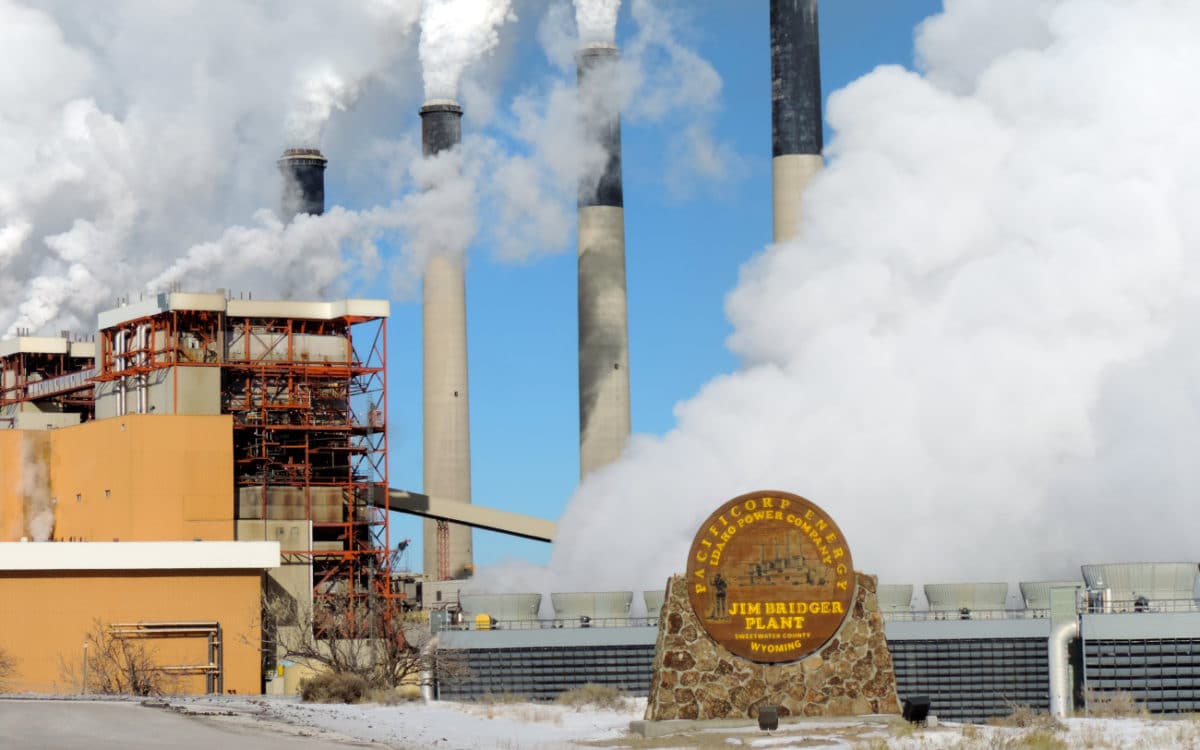PacifiCorp, the utility company that includes subsidiaries Pacific Power and Rocky Mountain Power, has announced plans to retire all of its remaining coal fired generation plants, just days before the company is set to deliver its finalized 2021 Integrated Resource Plan (IRP) to regulators. PacifiCorp service territory spans portions of Washington, Oregon, Idaho, California, Wyoming and Utah.
In an announcement made on August 27, the company stated that it would make no further investments in coal or natural gas in the future, and that it would be retiring 14 of its 22 active coal units by 2030. By 2040, that number is set to grow to 19, though it would retain two coal units at Wyoming’s Jim Bridger power plant, converting them to natural gas peaker plants in 2024.
The Jim Bridger conversion is still in-line with the company’s plan for no new gas investment, as those plans were known prior to Friday’s announcement.
In total, the company’s coal capacity is set to fall 4 GW by 2040, while its gas capacity will fall by 1.5 GW over the same time period. Replacing these assets, PacifiCorp intends to deploy more than 3.6 GW of new wind, more than 5.6 GW of new solar, and close to 6.7 GW of storage capacity, as well as significant investments in new transmission to support these resources.
The company also plans to bring on-line 2.7 GW of “advanced nuclear and non-emitting peaking resources” by 2040.
The new plan is slightly different than the one outlined in the company’s 2019 IRP, where the company planned to add just under 11 GW of wind and solar by 2038, complemented by 2.8 GW of battery storage. The new IRP includes slightly less solar and wind capacity, but more than doubles the amount of storage set to become active in the next two decades.
When the IRP gets submitted later this week, we’ll have a better idea of how much capacity of each resource is set to go on-line and when, as well as a breakdown of which states will be receiving capacity, and how much.
This content is protected by copyright and may not be reused. If you want to cooperate with us and would like to reuse some of our content, please contact: editors@pv-magazine.com.









By submitting this form you agree to pv magazine using your data for the purposes of publishing your comment.
Your personal data will only be disclosed or otherwise transmitted to third parties for the purposes of spam filtering or if this is necessary for technical maintenance of the website. Any other transfer to third parties will not take place unless this is justified on the basis of applicable data protection regulations or if pv magazine is legally obliged to do so.
You may revoke this consent at any time with effect for the future, in which case your personal data will be deleted immediately. Otherwise, your data will be deleted if pv magazine has processed your request or the purpose of data storage is fulfilled.
Further information on data privacy can be found in our Data Protection Policy.